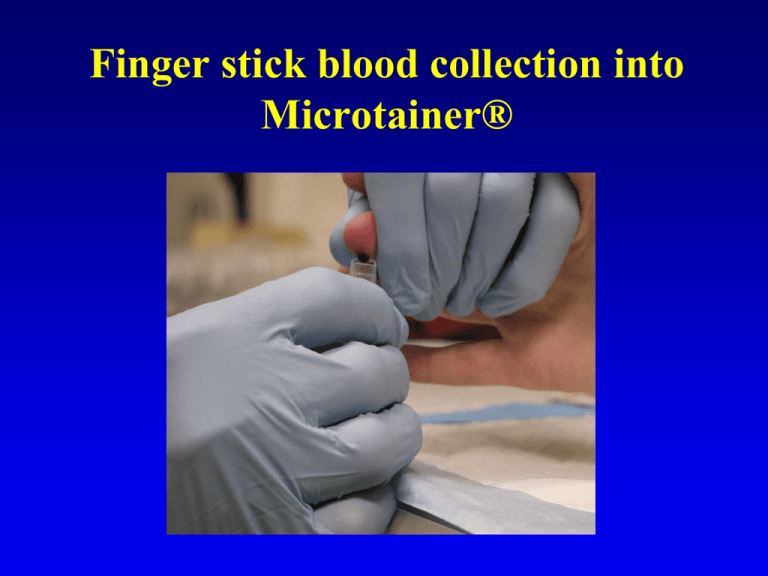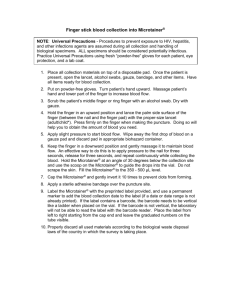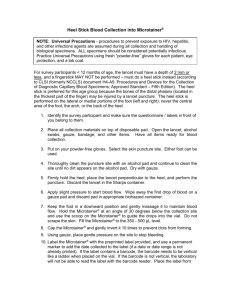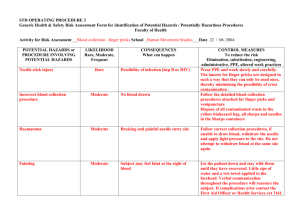Finger stick presentation
advertisement

Finger stick blood collection into Microtainer® Universal precautions • Assume that all human blood is potentially infectious for HIV, hepatitis, and other infectious agents. • Practice universal precautions using gloves, eye protection, and lab coats. • Always use sterile, single-use, disposable supplies for sample collection. Preparation for finger stick 1. Place all collection materials on top of disposable pad. Open the lancet, alcohol swabs, gauze, bandage, and other items. Have all items ready for blood collection. Preparation for finger stick 2. Put on your powder-free gloves. Turn participant’s hand upward. Massage participant’s hand and lower part of the finger to increase blood flow. Finger stick procedure 3. Scrub the participant’s middle finger or ring finger with an alcohol swab. Dry with gauze. Finger stick procedure 4. Hold the finger in an upward position and lance the finger (across the fingerprint) between the side and the pad with the proper size lancet (adult/child). Press firmly on the finger when making the puncture. Doing so will help you to obtain the amount of blood you need. Finger stick procedure 5. Apply slight pressure to start blood flow. Blot the first drop of blood on a gauze pad and discard in appropriate biohazard container. Finger stick procedure 6. Keep the finger in a downward position and gently massage it (but do not “milk”) to maintain blood flow. Hold the Microtainer® at an angle of 30 degrees below the collection site and use the scoop on the Microtainer® to guide the drop into the vial. Do not scrape the skin. Fill the Microtainer® to 250 - 500 µL level. Finger stick procedure 7. Cap the Microtainer® and gently invert it 10 times to prevent clots from forming. Finger stick procedure 8. Apply a sterile adhesive bandage over the puncture site. Finger stick procedure 9. Place the label on the vial. If the label contains a barcode, the barcode needs to be vertical like a ladder when placed on the vial. If the barcode is not vertical, the laboratory will not be able to read the label. Place the label so it can be read from left to right starting from the cap end and leave the graduated numbers on the tube visible. 10. Use a permanent marker to add the date collected to the label. 11. Properly discard all used materials and refrigerate the specimen until shipment or analysis. Important Note • If child is <12 months of age, the lancet must have a depth of 2 mm or less, and a fingerstick MAY NOT be performed – must do a heel stick instead (according to CLSI (formerly NCCLS) document H4A5: Procedures and Devices for the Collection of Diagnostic Capillary Blood Specimens; Approved Standard – Fifth Edition.)











